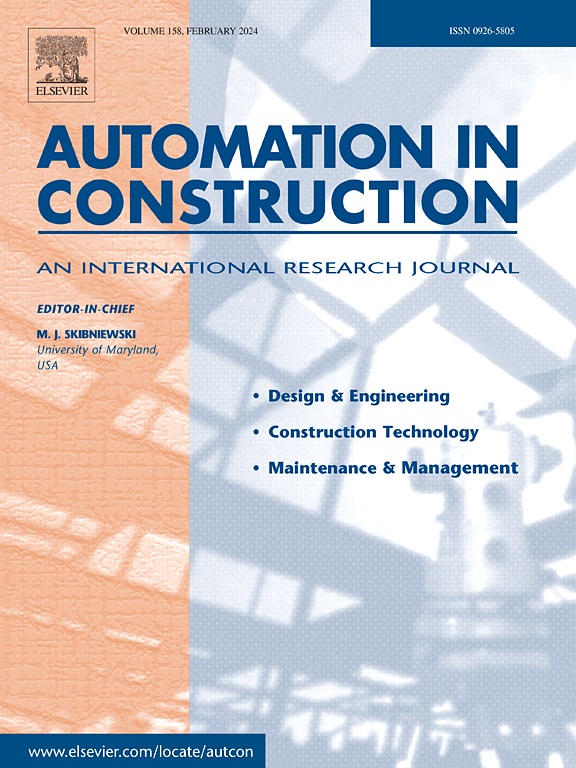Automatic prediction of railway ballast layer thickness using graph neural network based on GPR reflection signals
IF 9.6
1区 工程技术
Q1 CONSTRUCTION & BUILDING TECHNOLOGY
引用次数: 0
Abstract
Ground-Penetrating Radar (GPR) is widely employed for detecting the thickness of railway ballast layer. However, the complexity of the GPR data often requires manual interpretation by experts, which limits the efficiency of large-scale inspections. To address this challenge, this paper proposes a graph neural network-based method for automatic ballast layer thickness prediction. This method leverages Temporal Convolutional Networks (TCNs) to extract temporal patterns from the GPR A-scans and employs Graph Convolutional Networks (GCNs) with a self-adaptive adjacency matrix to dynamically learn and refine the spatial correlations across multiple A-scans. The proposed method was validated using a combined dataset of simulated and field data, and further tested through on-site applications. Experimental results show that the method outperforms four baseline models in prediction accuracy while maintaining high inference efficiency. In on-site tests, the average absolute prediction errors of Two-Way Travel Time (TWTT) and thickness were 0.25 % and 3.06 %, respectively. These findings demonstrate the effectiveness, efficiency, and potential scalability of the proposed method for railway ballast layer thickness detection.
基于探地雷达反射信号的图神经网络铁路道砟层厚度自动预测
探地雷达(GPR)在铁路道砟层厚度检测中应用广泛。然而,探地雷达数据的复杂性往往需要专家进行人工解释,这限制了大规模检查的效率。为了解决这一问题,本文提出了一种基于图神经网络的自动压载层厚度预测方法。该方法利用时间卷积网络(tcn)从探pr扫描中提取时间模式,并使用带有自适应邻接矩阵的图卷积网络(GCNs)动态学习和优化多个a扫描之间的空间相关性。利用模拟数据和现场数据相结合的数据集对该方法进行了验证,并通过现场应用进行了进一步测试。实验结果表明,该方法在保持较高推理效率的同时,在预测精度上优于4种基准模型。在现场试验中,双向行驶时间(TWTT)和厚度的平均绝对预测误差分别为0.25%和3.06%。这些结果证明了该方法在铁路道砟层厚度检测中的有效性、高效性和可扩展性。
本文章由计算机程序翻译,如有差异,请以英文原文为准。
求助全文
约1分钟内获得全文
求助全文
来源期刊

Automation in Construction
工程技术-工程:土木
CiteScore
19.20
自引率
16.50%
发文量
563
审稿时长
8.5 months
期刊介绍:
Automation in Construction is an international journal that focuses on publishing original research papers related to the use of Information Technologies in various aspects of the construction industry. The journal covers topics such as design, engineering, construction technologies, and the maintenance and management of constructed facilities.
The scope of Automation in Construction is extensive and covers all stages of the construction life cycle. This includes initial planning and design, construction of the facility, operation and maintenance, as well as the eventual dismantling and recycling of buildings and engineering structures.
 求助内容:
求助内容: 应助结果提醒方式:
应助结果提醒方式:


